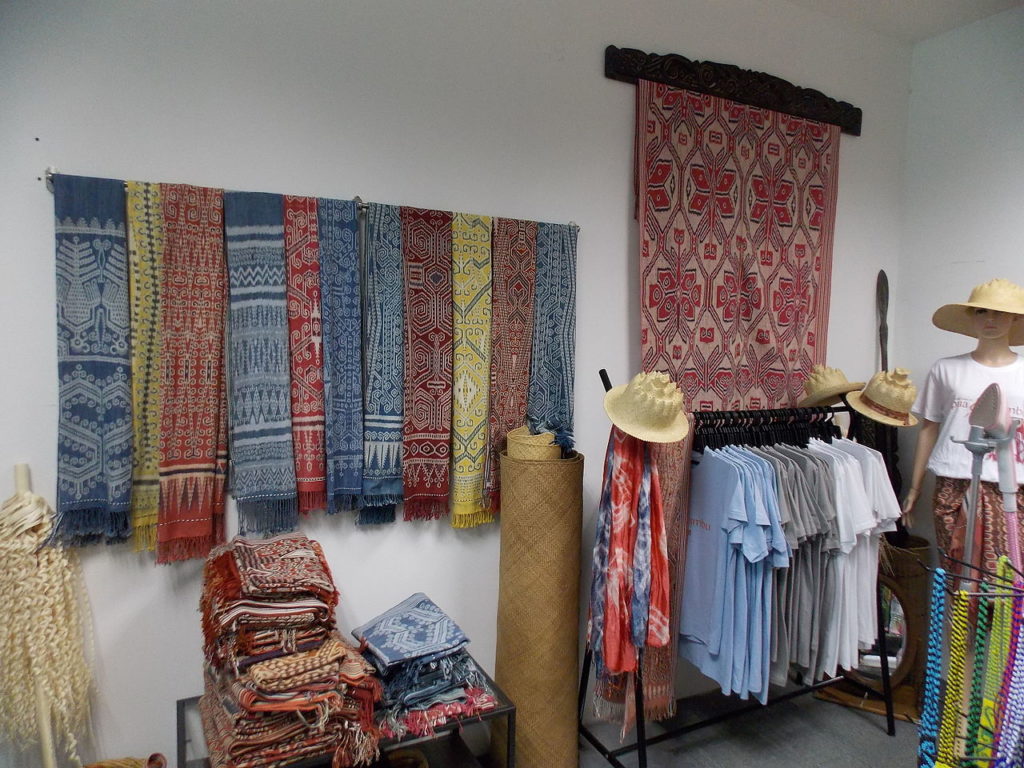But for some Southeast Asian weavers, inspiration comes to them through their dreams, from their ancestors or even spirits.
Imbued with sacred spiritual significance, these designs are regarded not as just another piece of cloth but masterpieces touched by divine inspiration.
T’nalak
The region around Lake Sebu in the Philippine province of South Cotabato is home to the ethnic T’boli people, who are known for their t’nalak cloth, handwoven from abaca fibres.
The women who produce this highly-regarded textile don’t follow any template. Instead, they recreate the patterns that come to them in their dreams, said to be bestowed by Fu Dalu, the spirit of the abaca.
Only some weavers are visited by Fu Dalu, and these special individuals are called Tau Mewel Kena (dream weavers).
 As t’nalak is considered a sacred cloth, strict rules have to be observed by the dream weaver throughout the weaving process. This includes maintaining a positive disposition, as any unfavourable words or conduct might impair the weave.
As t’nalak is considered a sacred cloth, strict rules have to be observed by the dream weaver throughout the weaving process. This includes maintaining a positive disposition, as any unfavourable words or conduct might impair the weave.
T’nalak is used in every important life event, from births and marriages to death. Because it is considered a gift from the spirits, one must never step on it and in the olden days, cutting t’nalak was a big no-no.
These days though, the T’boli are more relaxed about such things, and t’nalak is now used to make bags, wallets, hats and other fashion accessories.
Pua kumbu
Pua kumbu is the handwoven textile of the Ibans, an indigenous people who reside in the East Malaysian state of Sarawak, Indonesia’s West Kalimantan province and Brunei.
The Ibans believe that petara or ancestral spirits reside in pua kumbu. When the Iban still practised headhunting, the cloth was used to receive trophy heads back at the longhouse as its spiritual power rendered the antu palak (spirits of the enemy) harmless.
On account of its spiritual energy, pua kumbu are still used to demarcate sacred spaces in the Iban longhouse whenever weddings or offering ceremonies are held.
Since the cloth is of such great importance, it’s no surprise that even starting a weave must be done in a way that pleases the spirits.
 A series of rituals are held prior to weaving that includes preparing ancestral offerings and bathing in the river to wash away bad luck, all geared towards opening a channel to the supernatural realm.
A series of rituals are held prior to weaving that includes preparing ancestral offerings and bathing in the river to wash away bad luck, all geared towards opening a channel to the supernatural realm.
Historically, new patterns are received by the weavers from spirits and deities through dreams. Thus, inspiration is believed to come from the supernatural realm rather than the weaver’s imagination.
Not all weavers are blessed with these dreams, but those who are can translate the designs into weaving and the other women in their family follow their instruction.
There’s no greater honour for Iban weavers than to be bestowed with a design from the spirits, as copied designs are considered less spiritually potent.
Ikat
The islands of Sumba and Flores in Indonesia’s East Nusa Tenggara province are famous for producing beautiful, intricate ikat woven fabric.
The fabric is present at all of life’s important events and is especially significant during weddings. If the bride presents a quality ikat as dowry, then the groom has to pay a bride price equivalent to the price of a horse.
All girls on the islands must learn to weave ikat before they are considered worthy of marriage, and it is believed the spirits guide them in creating the patterns.
 Spirits also sometimes appear in dreams to tell weavers when they are ready to take on special patterns that are restricted to women of senior standing in society, ensuring that the designs are passed down from one generation to the next.
Spirits also sometimes appear in dreams to tell weavers when they are ready to take on special patterns that are restricted to women of senior standing in society, ensuring that the designs are passed down from one generation to the next.
In neighbouring West Nusa Tenggara, the Muslim Sasak people of Lombok produce two kinds of handwoven fabric, ikat and songket. Aside from various animal designs, the ikat patterns here are also inspired by Islamic calligraphy.
These fabrics are used for important events like peraq api (newborn naming ceremony), berkuris (shaving of a newborn’s hair), sorong serah aji krama (giving away the bride), and even as covers for the deceased prior to burial.
Certain patterns only come to weavers in their dreams, such as the patterns used for special occasions like circumcision ceremonies or for the fabric used to carry newborns.
According to airasia.com














